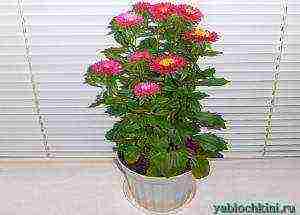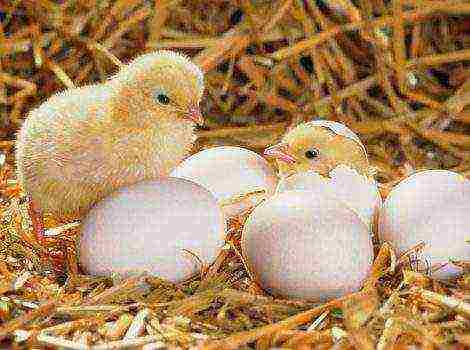Content
Hydroponics - a modern way of growing plants in special solutions. Translated from Greek, the term hydroponics literally means "working solution". When using this method, plants do without soil, are in a substrate that serves as a support for the root system and receive the necessary nutrients from the solution. It is selected individually for each plant, depending on the species.
The soilless method of growing plants began to be used in ancient times. The Hanging Gardens in Babylon are the first successful attempt at hydroponics. The Aztec Floating Gardens in Central America used the same technology. When warlike neighbors drove out the nomadic Indians living on the shores of Lake Tenochitlan in Mexico, they invented their own method of growing vegetables and fruits. The Aztecs built cane rafts and covered them with silt from the bottom of the lake, growing fruit trees and vegetables.
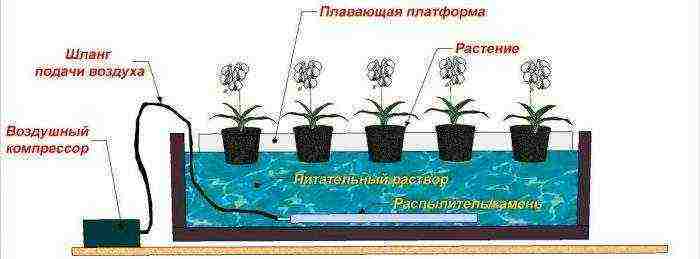
Before hydroponics was introduced, scientists were researching how the plant feeds. In the course of growing plants in water, they determined what nutrients the root was extracting. It has been found that the plant needs minerals for normal growth and development. Potassium promotes plant growth. Thanks to calcium, the root system is formed. Magnesium and iron are involved in the formation of chlorophyll. Sulfur and phosphorus serve to form the nucleus and protoplasm.
Advantages
Hydroponics has several advantages over the traditional method of growing plants.
- The plant receives its entire supply of nutrients in the required quantity. This contributes to its rapid growth and development. Plants grown in this way are in good health. Fruit trees give a good harvest, and ornamental plants delight with abundant and long flowering.
- .When growing plants without soil, you can forget about such a problem as drying out and waterlogging of the soil.
- Thanks to water flow control the number of waterings is reduced... You can forget about daily watering by choosing the necessary capacity and growing system. Depending on the size of the hydroponic vessel, watering is reduced from twice a week to once a month.
- The plant receives the exact amount of fertilizer... No need to worry about how much you need to deposit.
- No need to use pesticides... A hydroponically grown plant is not afraid of soil pests, root rot and fungal diseases.
- Transplanting a plant is easy and simple... The roots are not injured during transplantation, they do not need to be freed from the ground. It is enough to transfer the plant into another container by adding a solution.
- Hydroponics is an economical way to grow indoor plants... They do not need an earthen substrate that needs to be changed annually. Formulas and specialty equipment are affordable for most people.
- The earth tends to accumulate harmful substances that threaten human life (radionuclides, nitrates, heavy metals, poisons). In soilless cultivation, the plant only assimilates what it needs. Fruit plants will be environmentally friendly and safe... In terms of taste, they are in no way inferior to plants grown in the traditional way.
- Growing plants using the hydroponic method is not only economical, but also pleasant... Do not get your hands dirty, as you do when working with the ground. In addition, hydroponic vessels are lightweight and compact. The green corner in the house will look neat, there will be no extraneous odors and debris.
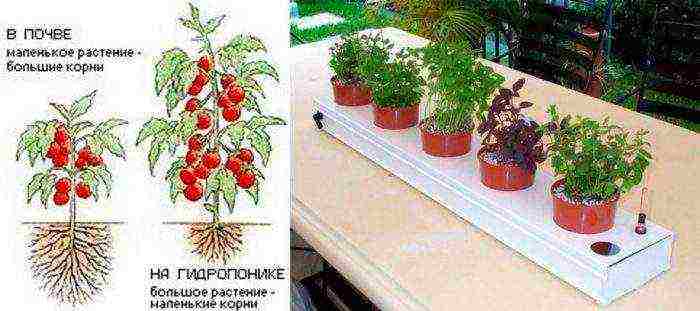
Do not pay attention to the stereotypes that have developed over the centuries that a plant can only be grown in the ground. This is not an artificial method using pesticides. The hydroponics method is completely safe.
Hydroponics made easy
Having mastered the basic concepts, you can start growing plants. This method does not require much labor. It will be much easier to take care of indoor flowers. Especially if you use automated circulation systems, which in some cases can be assembled by yourself. You can make your life easier by reducing the amount of watering and fertilizing.
Hydroponics is inexpensive
To make a hydroponic vessel, you will need an ordinary plastic pot and any suitable larger container. The main thing is that it does not transmit light, contains a certain amount of water and is chemically inert. A regular paper bag for milk or juice, intended for long-term storage, will do. From the side of the seam, a hole is cut in it for the pot. The container is turned on its side. The pot with the substrate is immersed in the solution for 1-2 centimeters.
The composition of the substrate should include vermiculite, perlite, expanded clay, mineral wool, coconut fiber. Do not forget about the inert chemical fiber, which can be used as foam rubber, nylon, nylon or polypropylene threads. These materials will cost no more than potting soil. If the soil needs to be changed every year when transplanting, then the hydroponic substrate will last for several years.
To grow one small plant, you need to prepare one liter of nutrient solution. The concentrate is designed for 50 liters of hydroponic solution. Thanks to it, you can take care of 50 plants per year or stretch the liquid for 50 years.
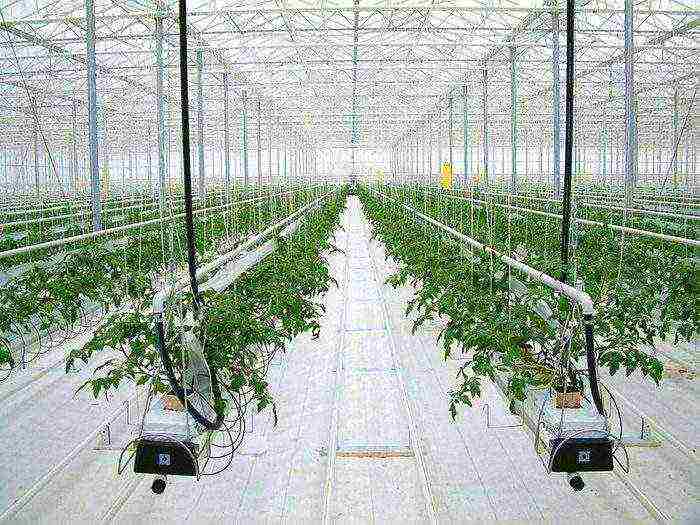
What plants can be grown hydroponically?
The hydroponic method can be applied to most plants that are grown by seed or cuttings. When transplanting adult specimens, it is better to take plants with thick and coarse roots. They should be well cleared of the ground. Hydroponics is not carried out if the plants have a delicate root system.
Plant transplant rules
To transplant a plant into hydroponics, it must be removed from the pot and soaked with an earthen ball in a bucket of water at room temperature. After several hours, the soil is carefully separated from the roots. Then the roots are washed under a light stream of water. The peeled roots are straightened down and covered with a special substrate, holding the plant. It should not touch the roots of the water layer. The solution will rise through the capillaries of the substrate, so the roots will reach the required depth. After transplanting, the hydroponic substrate is watered with plain water, the vessel is filled. In order for the plant to adapt to the new conditions of detention, it is left for a week. When it comes to an end, the water is replaced with a solution. You cannot fill it right away.
Basic concepts of hydroponics
Solution concentration
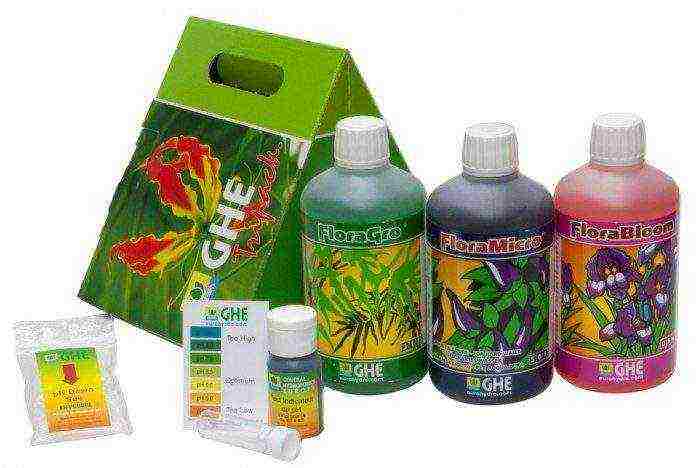
The concentration of the solution is selected according to the manufacturer's recommendations. The volume of the solution in the hydroponic vessel must be kept at the same level. This can be done by regularly adding plain water to it. It is very important that it is soft (settled or filtered). According to the manufacturer's instructions, the solution is completely replaced every three months. For insectivorous plants and epiphytes, a solution is prepared with a lower concentration of 2-4 times. Fast-growing plants need to increase the concentration of the nutrient solution by 1.5 times.Annual vegetable crops prefer a concentration that is 1.25 times higher than the average. In the cold season, the concentration of the solution is reduced by 2-3 times. It is equally important to lower the water level.
Solution acidity (pH)
5.6 is the optimal pH for most plants. As a rule, all hydroponic formulations are close to this figure. Depending on the type of plant, the required size is selected. PH 5.6 is not suitable for all plants. Gardenias and azaleas prefer a more acidic environment (pH = 5). An alkaline environment (pH = 7) is suitable for palms. An electronic pH meter is used to determine the pH. This device shows accurate values, but not everyone can handle it. Moreover, it is very expensive. Better to use special acidity tests that are designed for aquariums. They can be purchased at specialized zoological stores. They are accurate and easy to use. Universal indicator strips are not worth buying. They have a large margin of error.
How to prepare a hydroponic solution
A hydroponic solution consists of two ingredients. A medical five-cubic syringe is used to determine the exact dosage. The first component of the solution is a complex fertilizer (1.67 ml). Two types of fertilizers can be used. "Uniflor Bud" is suitable for fruit crops and flowering plants. For other species, it is better to take "Uniflor Growth", which promotes the growth of the green part of the plant. Fertilizer is diluted in one liter of water.
The second ingredient for preparing a hydroponic solution is a 25% calcium nitrate solution (2 ml). He prepares simply. 250 grams of calcium nitrate tetrahydrate is diluted in a liter of water. This amount of nitrate is used for soft water. For example, distilled or tap Petersburg with a concentration of 100 mg / l. If the water is hard, the amount of calcium nitrate is selected differently.
Just two simple ingredients and you get a solution of normal concentration (1 liter).
How to prepare a solution - Video
Hydroponics from scrap materials - Video
A more complex option for more plants - Video
Hydroponics is a way to grow plants not in soil, but in a nutrient medium. At the same time, they need to be watered relatively often or constantly, since the root system does not have enough minerals that are contained in the soil. Coconut fibers, gravel or crushed stone are used as a basis. With the help of these materials, the sprout is held in a reservoir through which the nutrient fluid circulates.
The main advantage of hydroponics is that you can grow a huge amount of vegetables and herbs on small plots of land, even if the soil is infertile. Use porous materials as a base, they will allow air to circulate freely inside the container with the plant. Purchase special fertilizers for hydroponics, ordinary nitrophoska is not suitable, as it should contain the most common minerals found in the soil.

Everything for hydroponics can be purchased at a specialty store or made yourself. To make a system for growing plants, you need two containers of different sizes. These can be ordinary plastic pots. In a smaller container, it is necessary to drill holes and fill the reservoir with expanded clay. The second container must be intact - this is the reservoir for the nutrient solution. Place the smaller pot in a larger container and fill it with water. Refill the container with nutrient solution regularly. From time to time, the roots should be in expanded clay with liquid. But sometimes drain the water without allowing the expanded clay to dry completely.
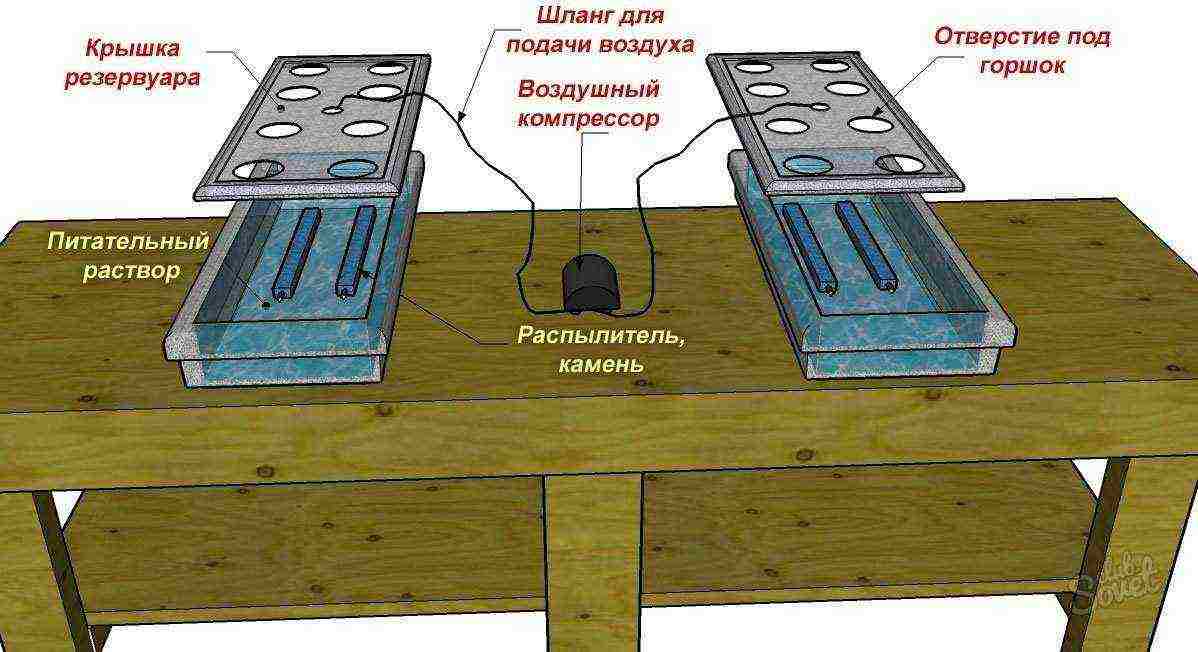
In this way, you can grow:
- greens;
- tomatoes;
- cucumbers;
- pepper.
It is not recommended to grow plants with a tuberous root system hydroponically; it often rots in high humidity conditions.Do not hydroponically plant plants with leaves that often fall off. In this case, the entire system will have to be cleaned frequently, as decaying leaves poison the solution.
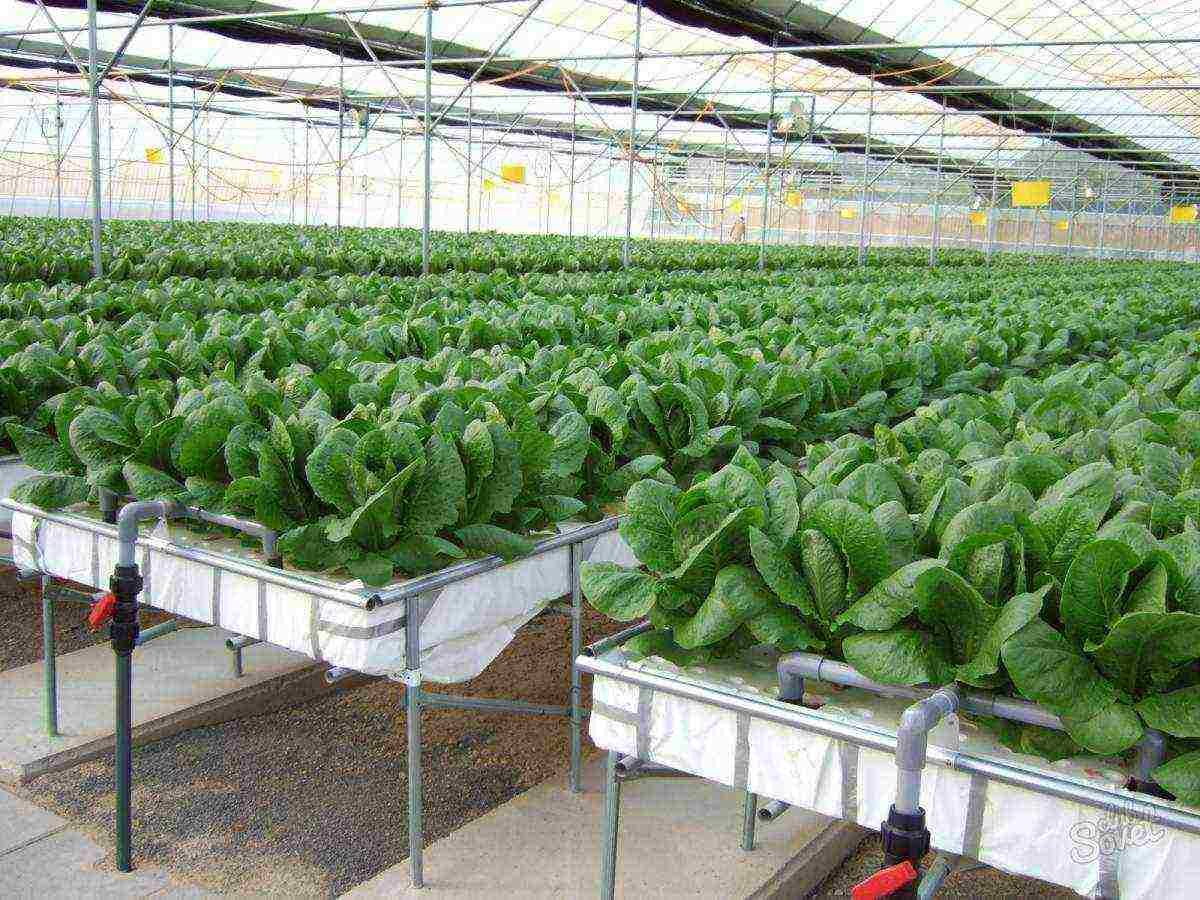
If you need to leave for a while, don't worry, nothing will happen to your plants. Fill the containers with nutrient solution and you can go on vacation. Some tanks only need to be refilled once a month. There are special automated systems with humidity and temperature sensors. When the temperature drops, heating turns on. When the amount of water decreases, the valve is triggered and the container is filled with nutrient fluid.
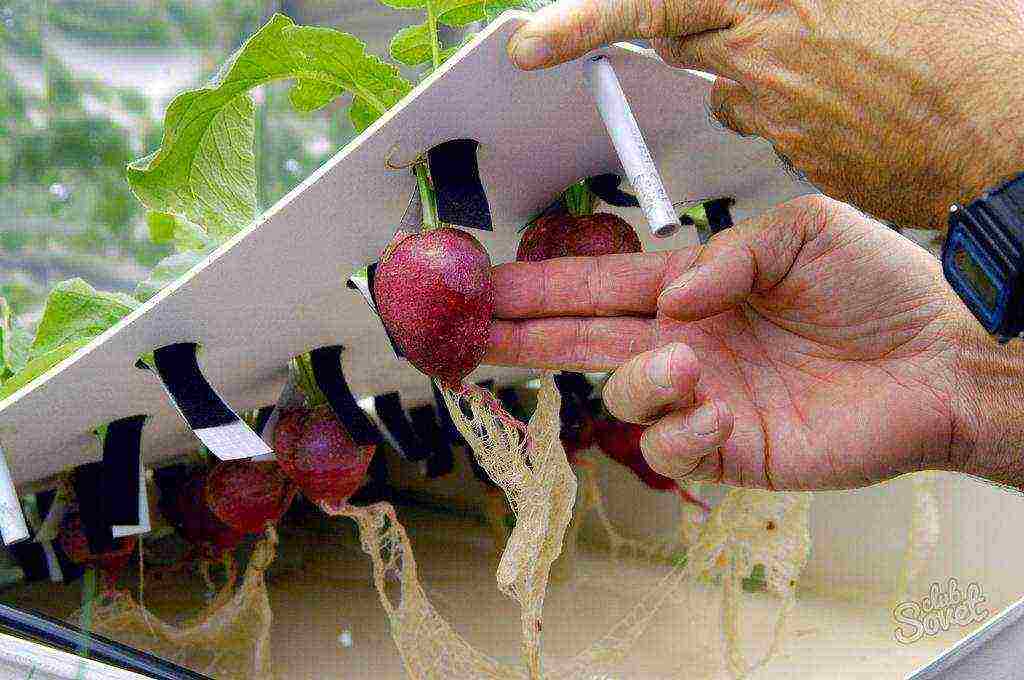
You can transplant your favorite flowers into hydroponics. To do this, moisten the soil and remove it along with the stem and roots of the plant. Thoroughly wash the roots from the soil, it is impossible for soil particles to get into the nutrient solution. Cut off any damaged areas of the roots and immerse them in expanded clay. Secure the plant with substrate and fill the container with nutrient solution. It is necessary to replant plants as they grow.
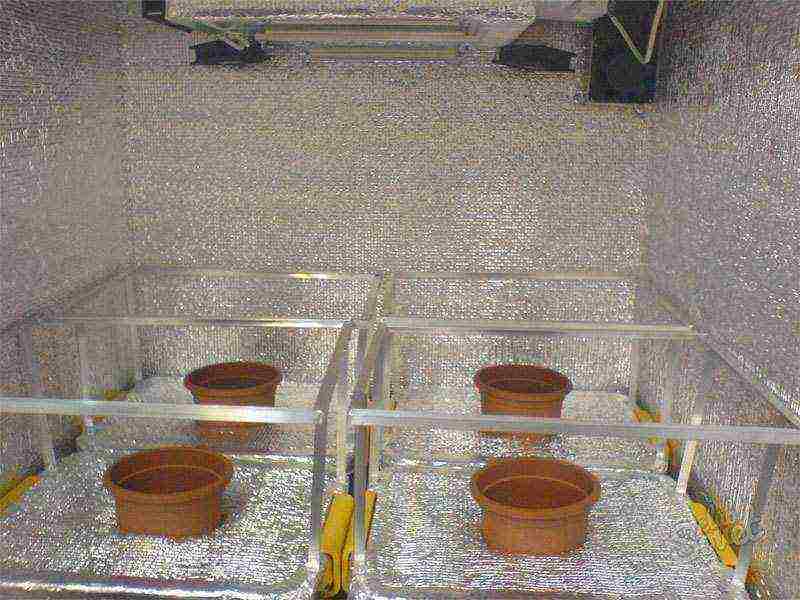
Growing hydroponics is not difficult, you need to monitor the moisture level of the substrate and replenish the reservoirs with nutrient fluid in time. In many developed countries, houseplants and greens are grown in this way. And entrepreneurs are engaged in growing vegetables not in the ground, but in a nutrient solution.
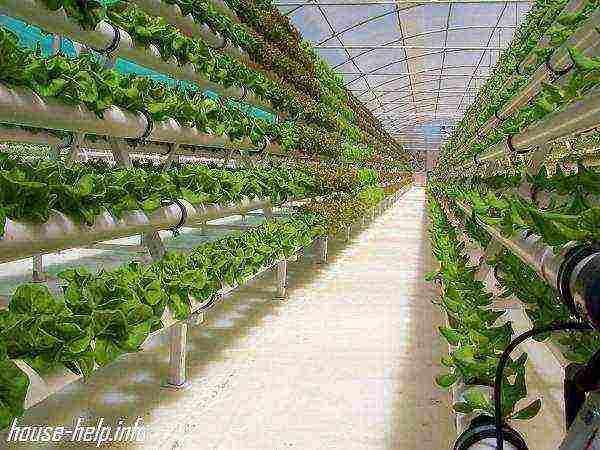 How to grow hydroponics at home
How to grow hydroponics at home
When you start considering growing hydroponics at home, don't be intimidated by the foreign word; the term "hydroponics" itself comes from the Greek "water" and "work" - in other words, it is "working solution". And to put it simply, hydroponics is a method of growing plants (for example, a decorative sunflower) in an aqueous solution with small admixtures of the appropriate microelements and ... no earth! If you are interested in how the roots breathe in this case, then everything is very simple: the water is saturated with oxygen through an aquarium pump.
There are many proposals, both domestic and foreign, with the help of which microelements are added to the water. Such complexes can be designed for both the flowering period and the growing season. Of course, you can mix all the necessary components yourself, but do not forget about the correct proportions, with which special tables can help you. Now let's figure out how hydroponics is grown at home.
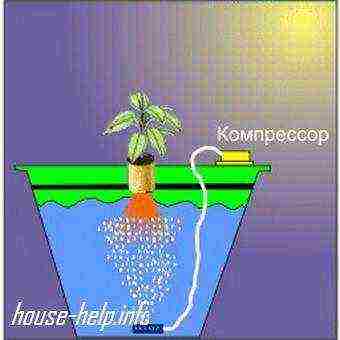
What is required in the work
To equip a system in which the roots of plants will constantly be in water, the following will be required (excluding the ventilation and lighting system):
- plastic tank with a capacity of 50 liters;
- fertilizers;
- twelve plastic cups;
- thin hoses in the amount of six pieces;
- substrate (mineral wool + expanded clay);
- aerosizing stone;
- air pump designed for six channels.
Having prepared everything you need, get to work.
to the menu ↑ How to grow hydroponics at home
Step 1. Make a hole at the bottom of the tank, insert a tube there, the length of which is slightly longer than the height of the tank. Only a few centimeters of the tube must be left in the tank itself, everything else is brought out to the lid and fixed. A special fitting with a rubber gasket is inserted into the wall - this will be a level tube through which you can check the remaining amount of water in the system.
Step 2. In the lid of the container, make 12 holes of such a diameter so that plastic cups can be inserted into them, and they, in turn, do not fall through. You may additionally have to glue the lid with some kind of reflective material, because if there is light in the container, then the water will begin to bloom, which will not allow the roots to develop correctly.
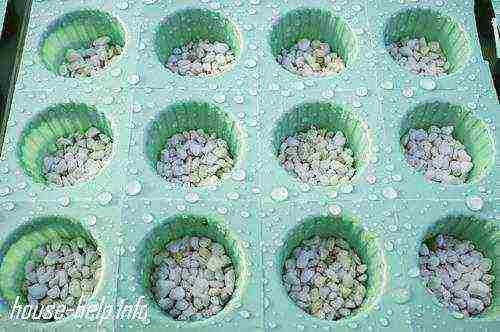
Step 3. Holes are cut in the cups for the roots - five holes with a diameter of 1 cm will be enough. The glasses are filled with expanded clay, there is little space left for mineral wool with a seed.
Step 4. Next, you need to make another hole in the container near the lid - for air hoses. At the bottom of the container, aerator stones are laid out, and a hose is removed through the hole made. The pump is located above the point of the hose outlet - this will prevent the reverse movement of water.
Step 5. The tank is filled with water just enough to leave about 10 centimeters to the plastic cups. Actually, that's all - the homemade hydroponics system is almost ready!
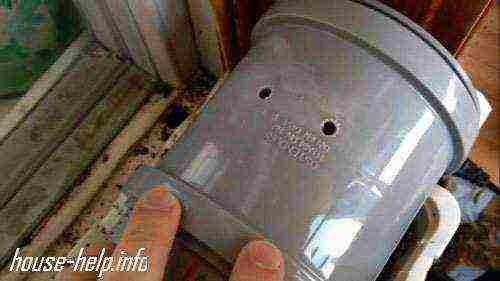
Close the container with a lid, insert the cups into the corresponding holes, turn on the compressor and for the first ten days, keep the plants in water with 6 psh. This technology, when compared with ordinary land, is more laborious, but the quality and volume of the harvest will more than pay off all the costs and you yourself will see that hydroponics is the future of gardening!
You end up with twelve plants. Now you know how to grow hydroponics at home. We also advise you to read about the proper care of tomatoes.
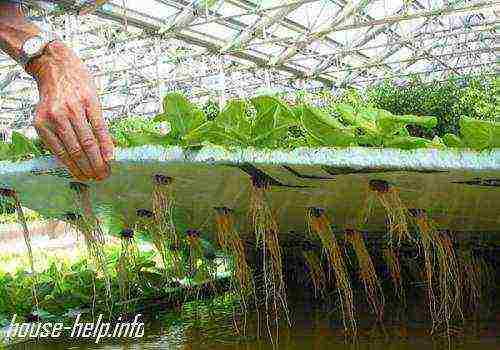
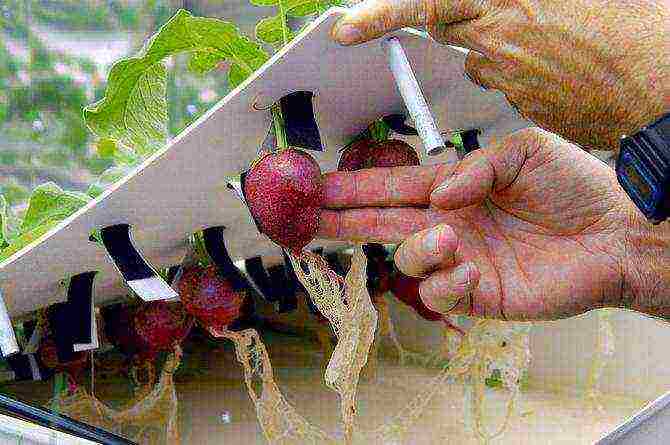
This method of growing plants at home is not very common in our country. Mostly it is used by flower growers - experimenters and "advanced" flower collectors. Such installations did not become popular due to the lack of aesthetics of external data and the complexity of the device. Hydroponics is more commonly used in industrial plant growing. And ordinary flower lovers use potting mixes with various components. But is it really that complicated? How to use hydroponics at home?
Hydroponics is a method in which you can grow plants without the use of soil, using only a special water-based nutrient solution. Instead of ordinary soil, they take coconut substrate, perlite or small expanded clay - they are most suitable for indoor plants. Such substrates have good water and air permeability, do not react with a special aqueous solution. Less commonly, polyethylene, quartz, granite or glass in granules are used.
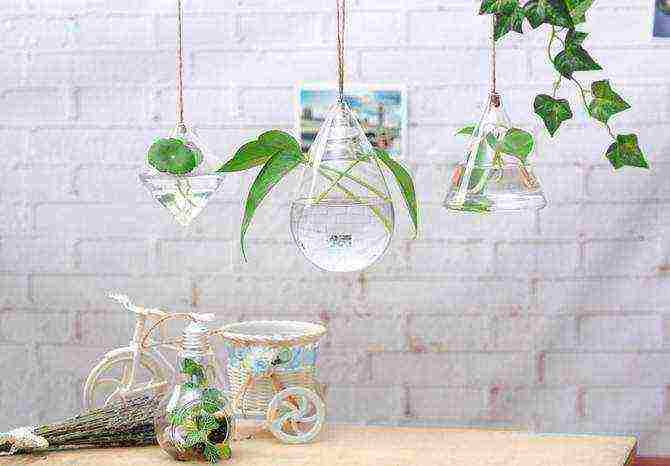
Let's try to figure out, without complicated technical formulations, how to use hydroponics at home and how to make this device yourself.
To build a "hydroponic device" you will need two containers, for example, two flower pots, of different sizes. The smaller pot is intended directly for planting the plant. In this pot, you need to make a large number of small holes, you can use a thin nail heated on fire. We fill this flower container with the prepared substrate and plant the plant in it.
A larger container should be made of a dense material that does not allow water and light to pass through. In a larger pot, you need to pour a special aqueous solution with the addition of hydroponic fertilizers or growth accelerators. This liquid will provide the necessary nutrition to the roots. These supplements are sold in a large selection at all grow shops.
A smaller container should be placed in a larger one. It is very important that the roots of the plant are not completely immersed in the solution, but only two thirds of it (approximately 2 centimeters). You will need to constantly monitor the level of the solution. The root of the plant should not dry out. There should be a distance of approximately 5 centimeters between the bottoms of the two containers.
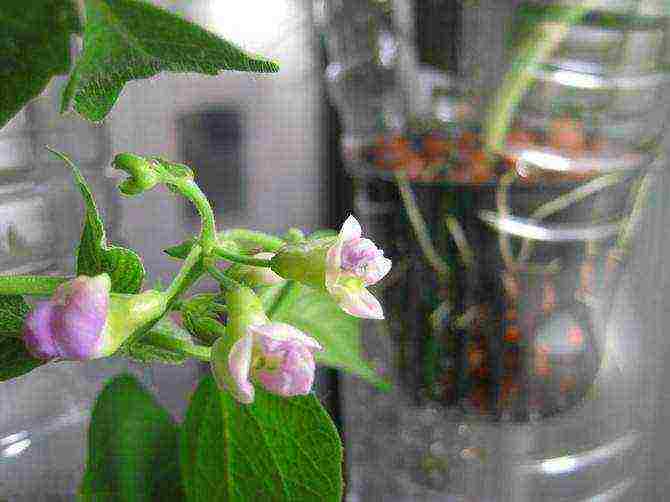
In principle, this is where the creation of a hydroponic device ends. In general, there is nothing difficult in this. Anyone who has decided to try this method of growing plants at home can safely get down to business.
Hydroponics is great for growing any kind of plant: vegetables, berries, greenery, and indoor flowers. With hydroponics in an ordinary room, you can get a rich harvest of radishes, cucumbers, tomatoes, peppers, strawberries and aromatic mint.When growing indoor plants, especially careful care will be needed only for those whose root system is easily rotting.
